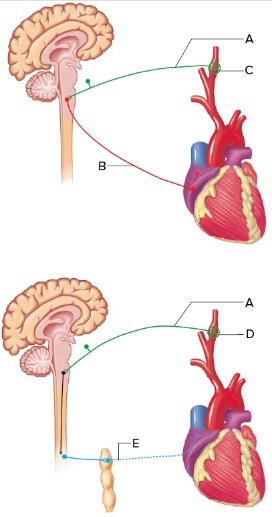 The figure illustrates the autonomic reflexes and the heart. What does "A" represent?
The figure illustrates the autonomic reflexes and the heart. What does "A" represent?
A. Decrease in blood pressure detected by carotid baroreceptors
B. Sympathetic nerve
C. Increase in blood pressure detected by carotid baroreceptors
D. Vagus nerve
E. Glossopharyngeal nerve
Answer: E
You might also like to view...
On axial CT images, the falciform ligament separates the caudate lobe of the liver from the left lobe.
Answer the following statement true (T) or false (F)
When an enzyme's activity is destroyed by heat or a change in pH, the enzyme is said to be
A) conjugated. B) denatured. C) toxic. D) broken. E) tertiary.
The most common lipids in the body are
A. glycoproteins, and they are used as backbones for cell membranes. B. triglycerides, and they are used for energy storage in adipose. C. eicosanoids, and they are used as hormonal messengers. D. phospholipids, and they are used as key ingredients of bile salts. E. steroids, and they are used as signaling molecules in inflammatory responses.
Which structural category of joints allows for the greatest range of motion?
A) fibrous B) cartilaginous C) synovial D) gomphosis E) suture